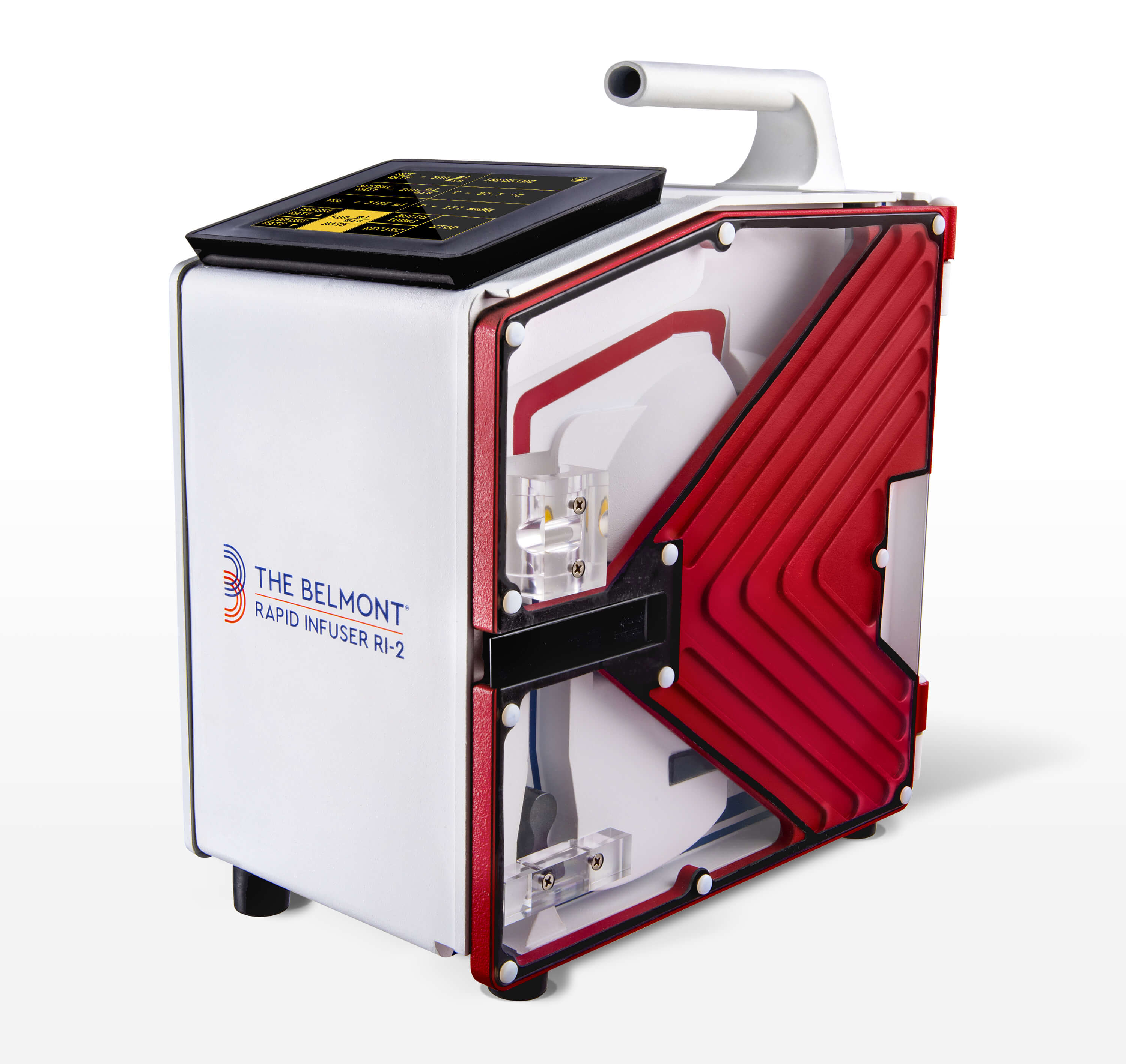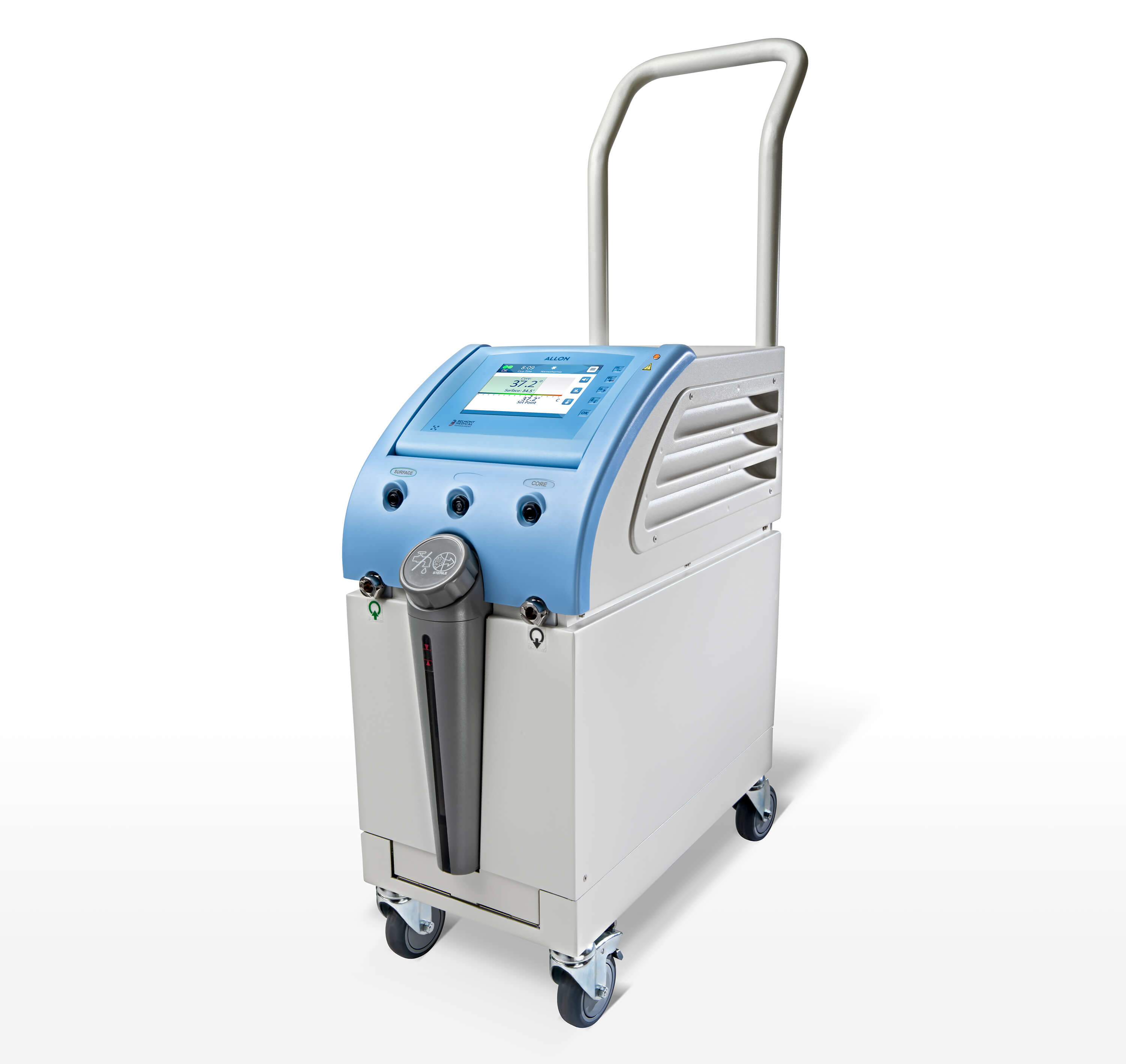Surgical Care
Complex problems require novel solutions.
Perioperative hypothermia is a common but largely preventable problem with serious implications for patients, surgeons, and hospitals. Costly surgical complications, prolonged recovery time, higher risk of surgical site infection, and increased blood loss are all negative outcomes associated with poor management of patient temperature. Belmont’s advanced patient temperature management solutions have been designed with the modern OR in mind, because we know that providing complex clinical care requires a team of not just people, but also specialized equipment designed to deliver predictable outcomes.
Maintaining Normothermia Is Mission-critical
Everything about the OR leads to cold patients—the room temperature, the exposed patient, the administration of cold fluid, and, of course, the anaesthesia itself. A rapid initial decrease in temperature is noted in the first half hour following anaesthesia administration, with core temperature dropping by about 1 to 1.5°C in the first hour.3 Additionally, administration of 1 litre of room-temperature saline can lead to a drop in core temperature by 0.25°C.4 Furthermore, even mild hypothermia contributes significantly to patient care costs and needs to be prevented.5 A dip of only 1.9°C in core temperature was found to triple the incidence of surgical wound infection and increase the duration of hospitalization by 20% following colon resection.6
In response, modern ORs employ a variety of methods to help maintain patient normothermia during surgery, by utilizing warming devices throughout the entire perioperative continuum, pre-op to post-op, and by administering all fluids through a dedicated IV warming device.
How We Help
Your Patients’ Fast Track to the PACU
Used by top cardiac centers, Allon® reliably maintains consistent patient temperature during surgical procedures using uniquely designed ThermoWrap® garments that provide ideal body surface coverage and surgical access. Unlike Forced Air Warming (FAW), Allon’s level of precision in normothermia maintenance reduces the need for post-operative warming, and because normothermic patients can be extubated sooner, Allon helps fast-track patients to the PACU.7,8
Performance You Can Trust
The Belmont® Rapid Infuser RI-2 is an essential and potentially life-saving tool frequently utilized in cardiac and organ transplant procedures where there is a high risk of significant blood loss. The system’s multiple resource-saving capabilities enable surgical teams to remain focused on the patient throughout the procedure. Integrated patient safety features help limit the risk of adverse events associated with massive blood transfusions, while highly efficient electromagnetic heating technology provides consistent, normothermic fluid on demand.
Performing to the Highest Degree


The Belmont® Rapid Infuser RI-2
A leading medical device in combating hypothermia and blood loss, The Belmont® Rapid Infuser RI-2 rapidly delivers life-saving, warmed blood and fluid to shape outcomes and help provide optimal surgical care.
- Exceptional air detection and removal
- Reliable, efficient, dry-inductive heating
- Automatic priming and effortless re-priming
- Advanced pressure regulation
- Precise control and display of infusion variables
- Aluminum-free disposable
Designed With Your Patients in Mind


Allon® with ThermoWrap®
An advanced temperature management system, Allon® and its heat-exchanging ThermoWrap® help surgical teams maintain patient normothermia.
- Warming starts upon patient arrival at the OR
- Go from pre-op to post-op with a single ThermoWrap
- Multiple configurations for the positioning and access you need
- Effectively warms the patient without warming the OR, unlike Forced Air Warming (FAW)
Safely Deliver Hyperthermia Therapy


Hyperthermia Pump™
Designed to provide consistent fluid temperature and enable near-instantaneous warming, the Hyperthermia Pump™ is used to raise the temperature of the thoracic or peritoneal cavity during hyperthermic lavage procedures.
- Adjustable fluid temperature in 0.1°C increments
- Dry, inductive warming technology
- Medical-grade stainless steel heat exchanger
- Vacuum-assisted patient return
- Multiple disposable configurations available
- Knaepel A. Inadvertent perioperative hypothermia: A literature review. Jnl of perioperative practice. 2012;22:86-90. 10.1177/175045891202200302.
- Rohrer B, Penick E, Zahedi F, et al. Comparison of forced-air and water-circulating warming for prevention of hypothermia during transcatheter aortic valve replacement. PLoS One. 2017;12(6):e0178600. Published June 2, 2017. doi: 10.1371/Journal.pone.0178600
- Lenhardt R. The Effect of anesthesia on body temperature control. Frontiers in Bioscience. S2. June 1, 2010;1145-1154. https://www.bioscience.org/2010/v2s/af/123/fulltext.htm
- Sessler DI. Consequences and treatment of perioperative hypothermia. Anesth Clin N Am. 1994;12:425-456.
- Lenhardt R. The Effect of anesthesia on body temperature control. Frontiers in Bioscience S2. June 1, 2010;1145-1154. https://www.bioscience.org/2010/v2s/af/123/fulltext.htm
- Lenhardt R. The Effect of anesthesia on body temperature control. Frontiers in Bioscience S2. June 1, 2010;1145-1154. https://www.bioscience.org/2010/v2s/af/123/fulltext.htm
- Nesher N, Uretzky G, Insler S, Nataf P, Frolkis I, Pineau E, ... Weinbroum, AA. Thermo-wrap technology preserves normothermia better than routine thermal care in patients undergoing off-pump coronary artery bypass and is associated with lower immune response and lesser myocardial damage. Jnl of Thoracic and Cardiovascular Surgery. 2005;129(6):1371–1378. doi: 10.1016/j.jtcvs.2004.08.021
- Rohrer B, Penick E, Zahedi, F, et al. Comparison of forced-air and water circulating warming for prevention of hypothermia during transcatheter aortic valve replacement. PLoS One. 2017;12(6):e0178600.
